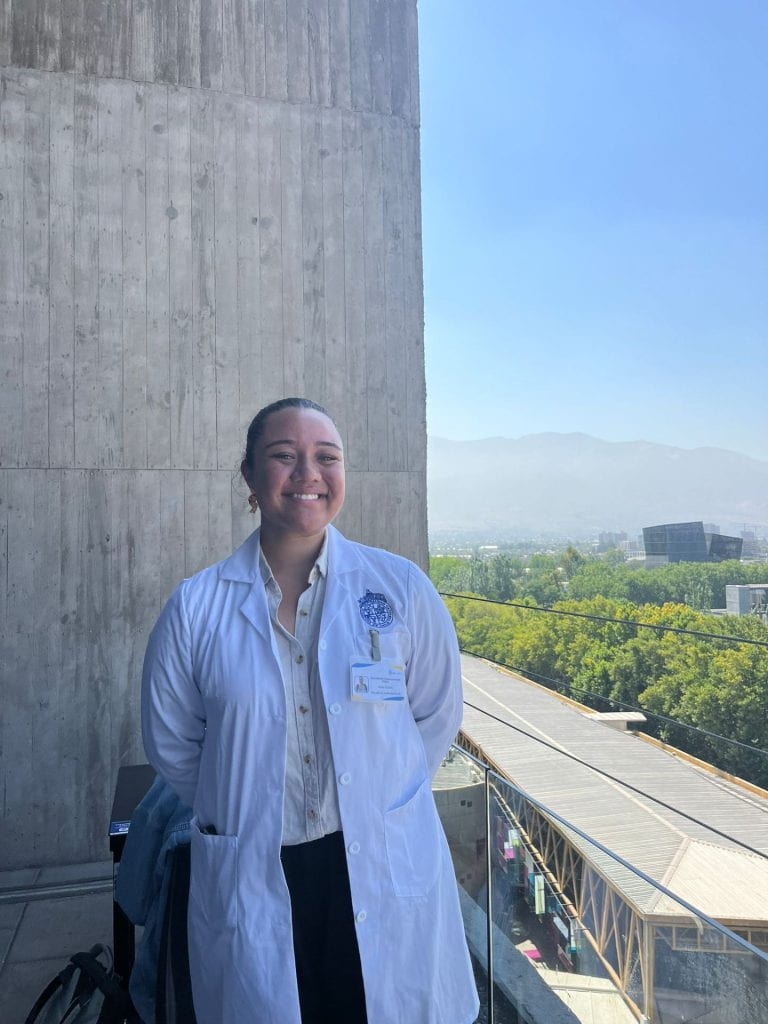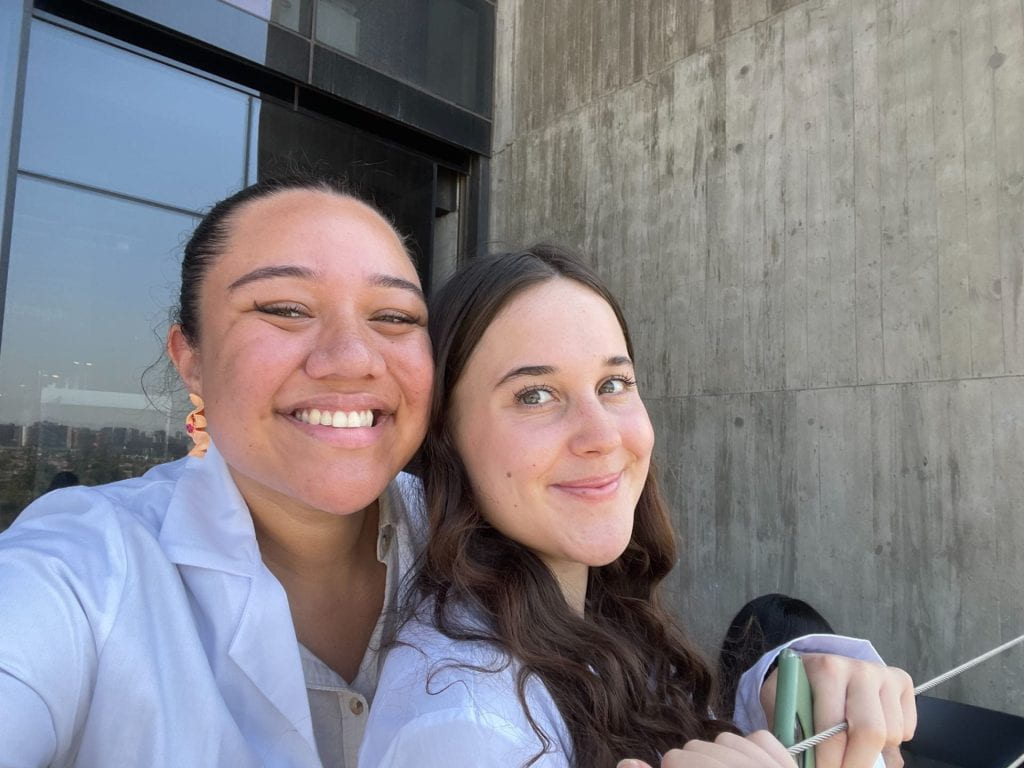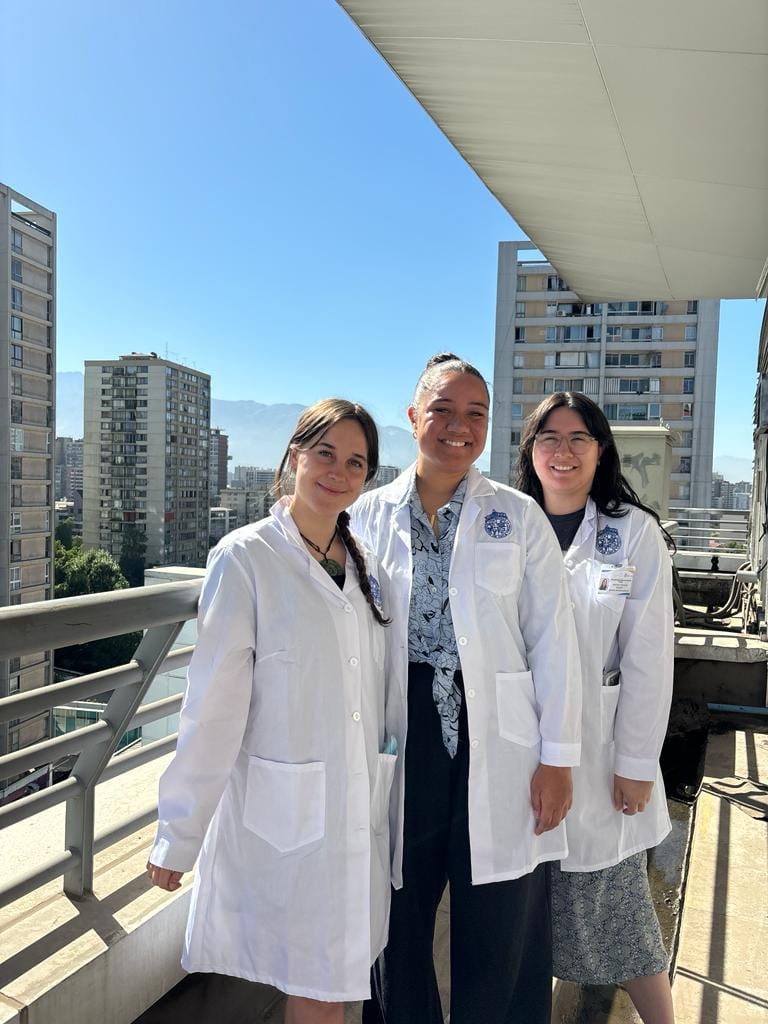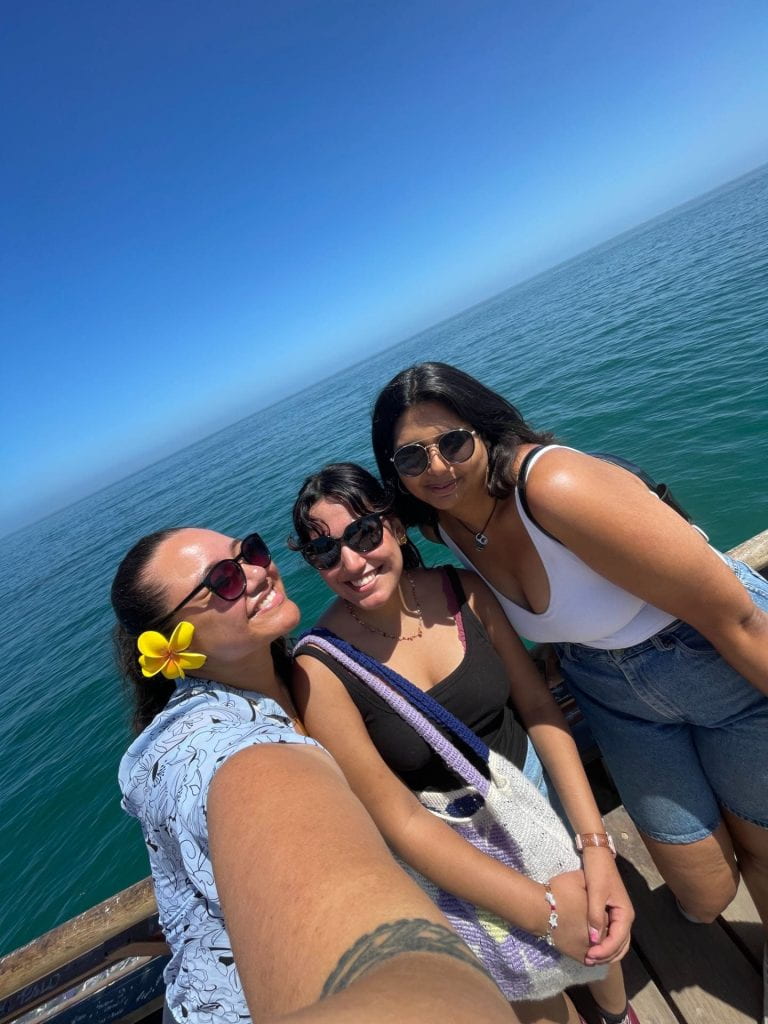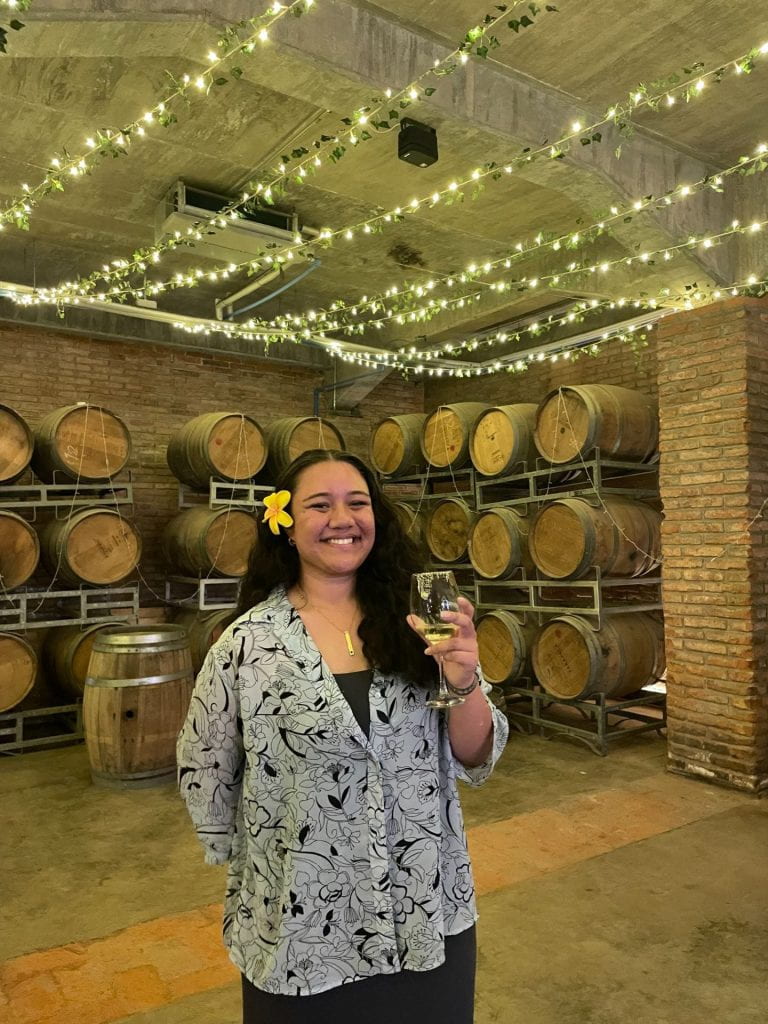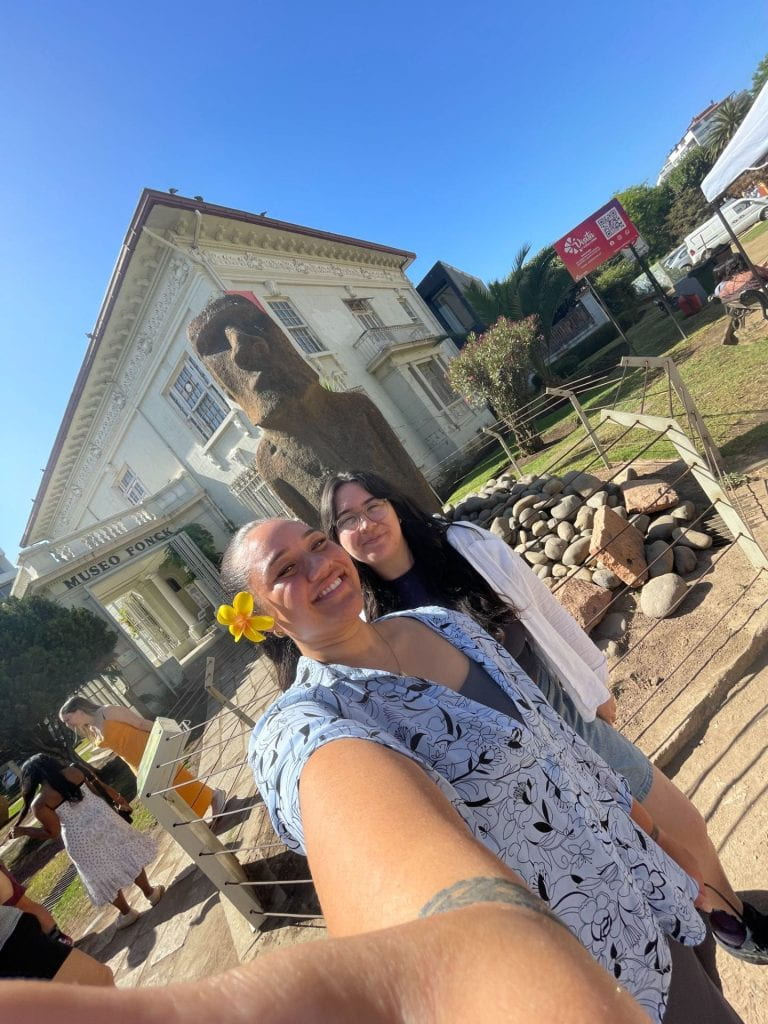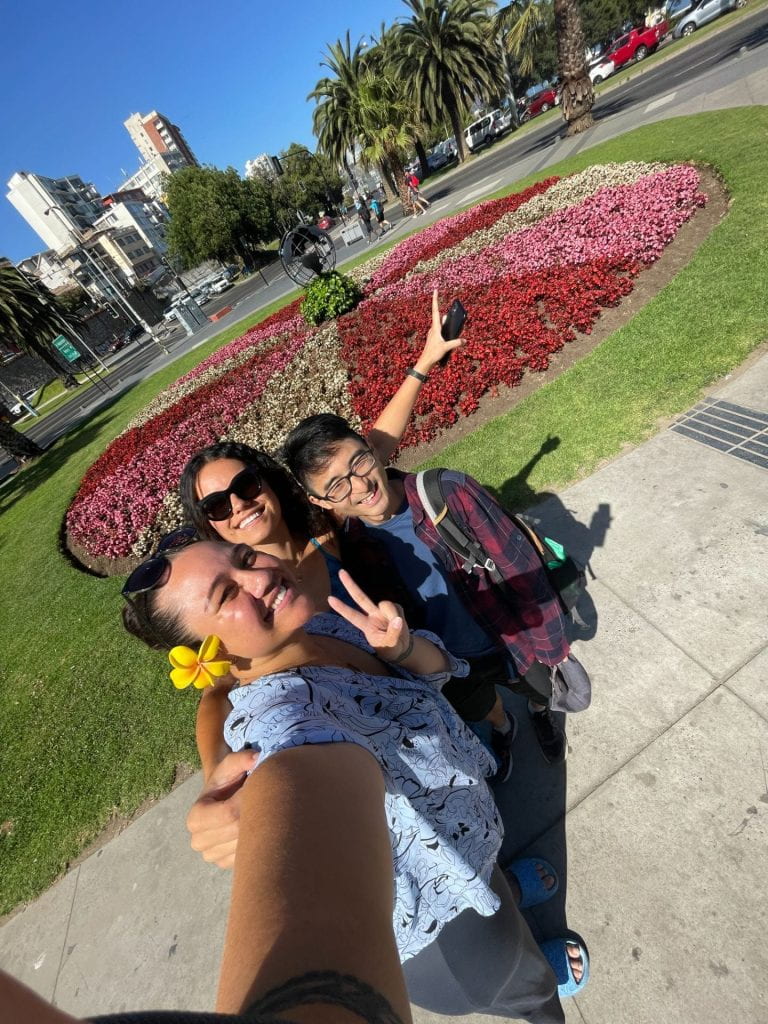Another week in the heat of Santiago as we delve deeper into learning about the Chilean health system! This week, we took our learning outside of the classroom and immersed ourselves in various settings connected to well-being.
After a seminar on health, we visited the huerta (vegetable garden) on the San Joaquin campus. At the huerta, we learned about the medicinal uses of mint, coriander, lavender and other plants found in Aotearoa. However, a new experience was learning about the Chilean fruits and indigenous plants commonly used here. My favourite was tasting the passiflora, a fruit on a common plant around Santiago. My only wish from this experience was that someone had warned me that passiflora makes you sleepy before I ate four.
As someone who has never lived further than five minutes from a moana, I never fully understood how well-being can be maintained or enhanced without the ocean. However, the seminar and huerta visit supported my understanding that it isn’t necessarily just the ecosystem, but our connection to the ecosystems around us that enhance our well-being.
Not having an accessible moana does not mean an absence of health but rather the space
to become more firmly grounded on the soil beneath your feet.
With this understanding, it furthers my awe of the indigenous communities of Chile whose landscapes vastly vary from that of Samoa, but whose love of their land would match our love for ours.
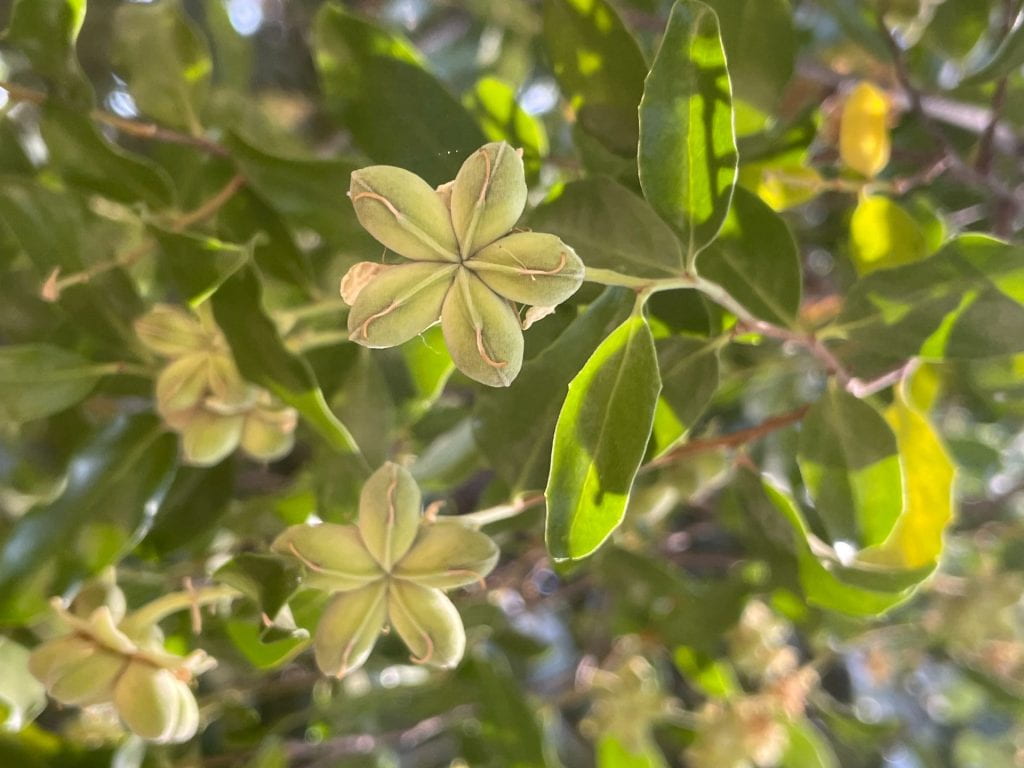
This week, we also got to undergo field observations in two health clinics! Suited up in our clinician coats, our group walked through the halls of Hospital Clínico de la Universidad Católica and San Joaquin Centros Médicos. We learned about various aspects of the Chilean health system, such as funding, structure, and medical treatments. We even got to witness an endovascular surgery and have medical images of an aneurysm explained to us by a clinician mid-angiography. A very valuable experience for me was seeing the operations side of the hospital. In my six years of working in the health sector, I have never had the opportunity to stand next to generators much larger than me and learn about the emergency power systems of hospitals. Nor have I been in a hospital basement to learn about the infrastructure’s water system or seen where oxygen tanks are stored. Charlotte Tukiri summarised this experience best for me. Whilst we were walking around on the roof of the Hospital Clínico, Tukiri mentioned how when we look at the health sector, we very fairly think about of our clinicians as heroes. However, we don’t always recognise how service workers are also saving lives. From keeping the wifi running to ensuring equipment is in the right place at the right time, the mahi of service workers is the root of hospital operations. My biggest takeaway from the field observations is that the network of health professionals needed to ensure an operating health system goes beyond clinicians and community workers, but must also include our electricians, our cleaners, our plumbers and all service workers.
We ended this week with a trip to Valparaíso! Although Santiago has grown on me, I can’t lie about being excited to see the moana again. We experienced the best of Chilean-made cuisine, and I experienced my first ever wine tasting, though I learnt a little too late that you were not actually supposed to drink the wine. Before this though, our first stop was at the Museo Fonck! Our amazing tour guide beamed as we neared the location, informing us that we were visiting our ancestors. We arrived at the coastal city of Viña del Mar in Valparaíso and saw a gorgeous Moai standing before the Museo. My immediate reaction was “what the fonck?” at the possibility the Moai stood stolen from its motherland. Yet, we quickly learnt the figure was donated to the Museo by communities in Rapa Nui, which was a relief for many of us. The stern face of the Moai stared into the sky but I still felt invited as if the figure was giving us a sogi (ancestral Samoan greeting) as we visited. Next, we went to the waterfront and stared into the Pacific Ocean. Dipping my feet into moana, I thought deeply about how these waters connected me back to Aotearoa and Samoa. It made Chile feel less far from home than I originally felt and I made sure to use every opportunity to tell everyone that the Pacific Ocean was my ancestor. Being connected to home in this way reminded me of my role as a Tama’ita’i Samoa (Samoan woman) to tautua (serve) my communities with all that I learn here. With this refreshed perspective, I am excited to begin the last half of my Chile experience – to connect with more communities, building our bridge of reciprocal knowledge and to enhance the health of not only those in Samoa and Aoteaora, but Chile as well.
